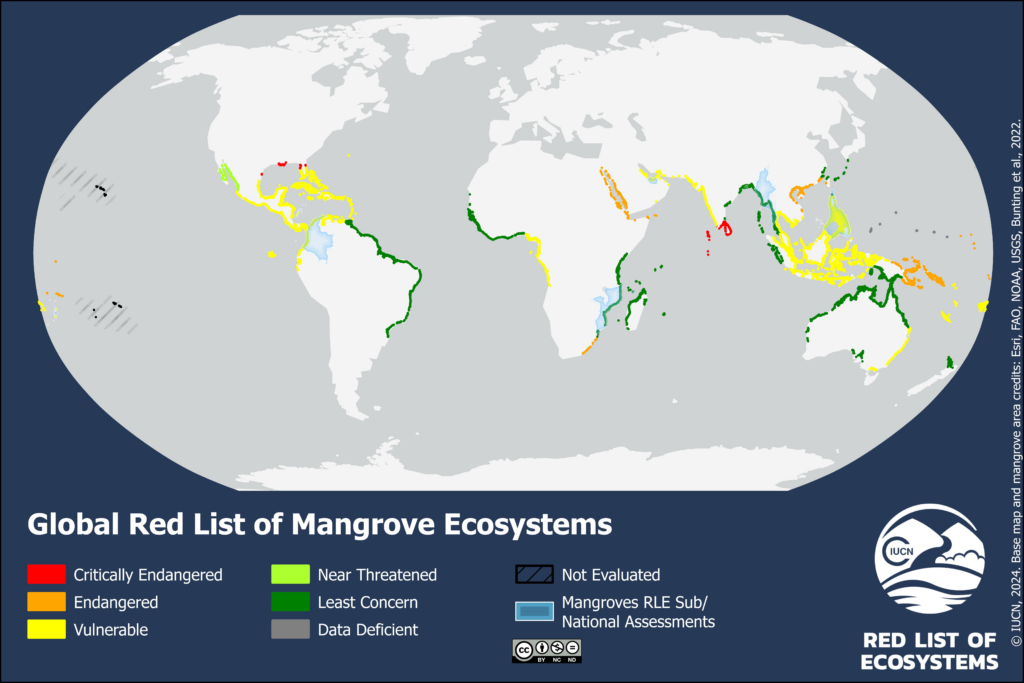
First global assessment of mangrove ecosystems at risk of collapse
-
Global Mangrove Watch
-
Coasts & Deltas
On the International Day of Biodiversity, IUCN, our partner in the Global Mangrove Alliance (GMA), released the first ever global Red List Assessment for a single Ecosystem type: the Red List of Mangrove Ecosystems. According to the assessment, 50% of all mangrove ecosystems are at risk of collapse, with nearly 20% at high risk, classified as either Endangered or Critically Endangered.
Mangroves benefit coastal communities through their coastal protection, as fish breeding grounds and provision of timber and non-timber forest products. As such, their collapse has serious socio-economic consequences. Mangroves are threatened by deforestation, development, pollution, and dam construction, but the risk to these ecosystems is increasing due to sea-level rise and the increased frequency of severe storms associated with climate change.
The Red List of Ecosystems is an important tool towards the goal of halting and reversing biodiversity loss, in line with the Kunming-Montreal Global Biodiversity Framework. It can help guide national assessments and actions to protect and restore these delicate ecosystems. Stakeholders can look at information included in Red List of Ecosystems assessment to identify the most pressing threats in their region and select the best mitigation and restoration options.
The assessment is a collaborative effort of over 250 experts, including the GMA and also based on data from the Global Mangrove Watch1. The Global Mangrove Watch provides governments and practitioners with near real-time information on where and what changes there are to mangroves across the world. The Red List of Ecosystems will be integrated into the Global Mangrove Watch providing data from Red List of Ecosystems assessment on an ecoregional level.
The Red List of Mangrove Ecosystems study, as well other Global Mangrove Watch data layers, also informs the Mangrove Breakthrough, a global commitment initiated by the Global Mangrove Alliance and the High-Level Climate Champions that aims to secure the future of 150,000 km2 of mangroves, and to which 50 countries and over 50 non-state actors have so far signed up.

More information on the IUCN’s Red List of Ecosystems in IUCN’s press release and can be downloaded here.
- The Global Mangrove Watch (GMW) was established in 2011 under the Japan Aerospace Exploration Agency’s (JAXA) Kyoto & Carbon Initiative by Aberystwyth University, soloEO and the International Water Management Institute, with the aim to provide open access geospatial information about mangrove extent and changes to the Ramsar Convention on Wetlands. Today, The Nature Conservancy, Wetlands International, Aberystwyth University, and soloEO are working with JAXA, NASA and a host of partners to develop the Global Mangrove Watch Platform.
